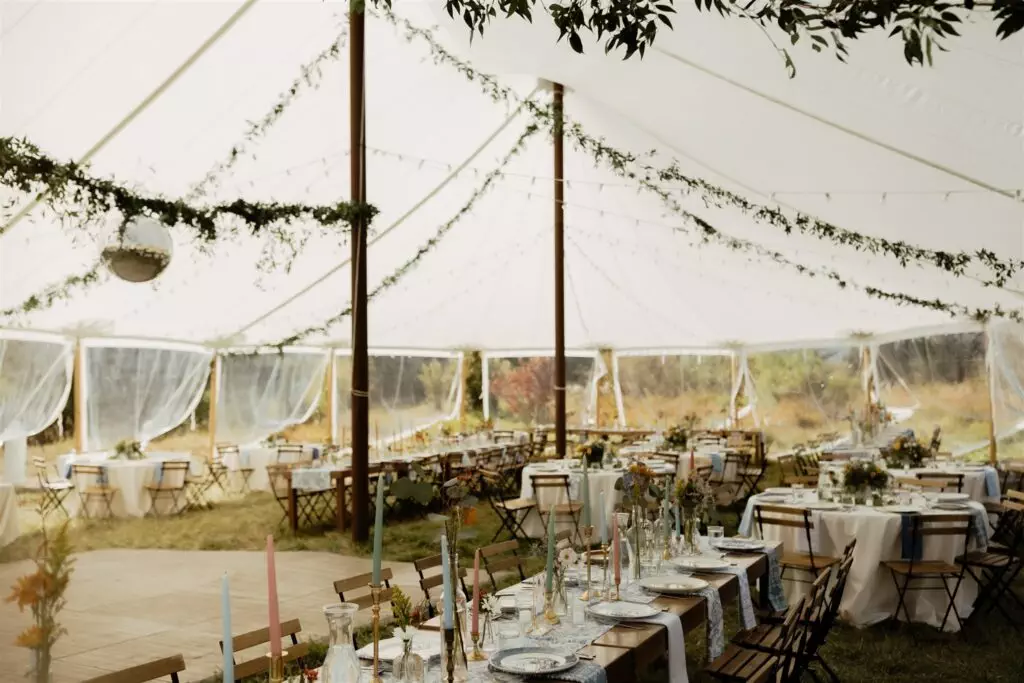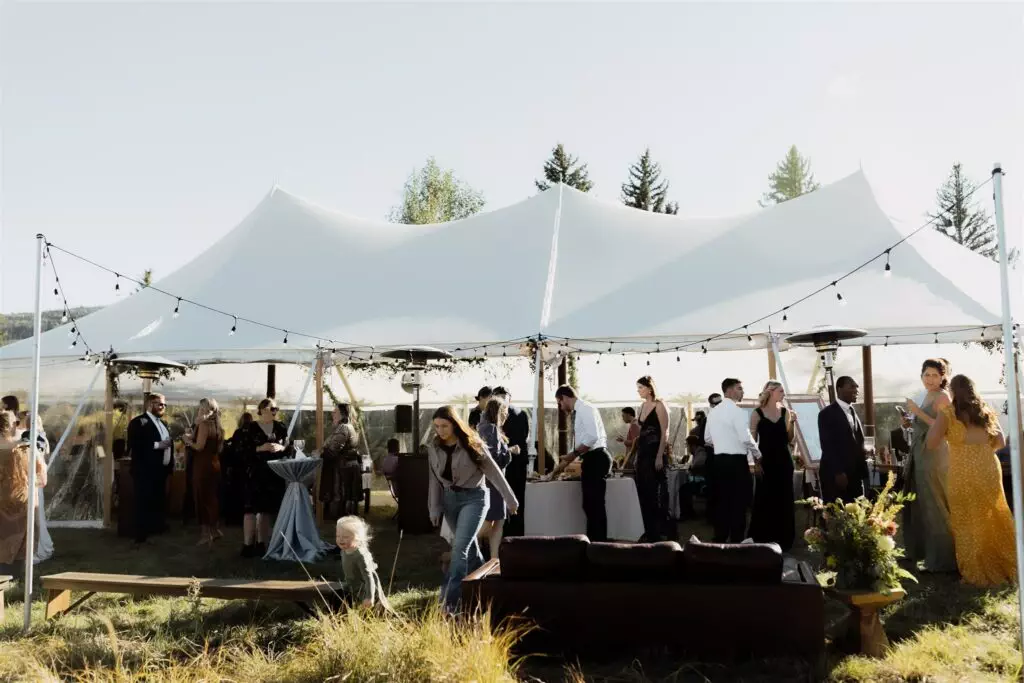Embarking on the journey of planning a tented wedding opens up a realm of possibilities where the enchantment of the outdoors meets the elegance of a curated celebration. While the idea of saying “I do” under the open sky is undeniably romantic, the logistics of executing a flawless tented affair require careful consideration. In this comprehensive guide, we delve into every aspect of hosting a tented wedding, from weather-proofing strategies and tent styles to space optimization, lighting choices, and the meticulous details of setup and breakdown. Whether you’re envisioning a rustic soiree or an elegant garden party, let this guide be your compass in navigating the nuances of orchestrating a memorable and seamless tented wedding experience.
Embracing the Great Outdoors: Weather, Backup Plans, and the Importance of Walls
Outdoor weddings offer a magical atmosphere, but Mother Nature can be unpredictable, especially in Crested Butte. Always have a weather backup plan in place, and don’t forget to rent walls for added protection. These not only shield against the elements but also provide a cozy and intimate ambiance. The walls on our sailcloth tent are clear so you are not blocking any views of the 360 degree views. These walls simply roll up to the tent top and can easily drop down to protect from cold weather or rain.
Exploring Tent Styles: The Do’s and Don’ts
When it comes to tent styles, the options are diverse. From traditional pole tents to sleek frame tents, each style brings its unique charm. However, be cautious about clear tents at higher elevations; the breathtaking views might come at the cost of guest comfort. Clear tents can have a green house effect creating a very warm climate inside the tent. This can lead to droopy flowers and melting candles. Below are three tyles of tents; vinyl pole tent, sailcloth tent and a frame tent.
Sailcloth Tent
Sailcloth tents, with their high peaks and gracefully flowing material, bring a touch of nautical charm to your celebration. Crafted from a lightweight sail-like material, these tents allow for an abundance of natural light during the day, transforming into a luminous haven as the evening progresses. Their timeless appeal and versatility make sailcloth tents a favorite among those seeking a dreamy, open-air ambiance with a hint of seafaring sophistication.
Frame Tent
For those envisioning a wedding canvas that seamlessly blends sophistication with adaptability, frame tents stand as architectural marvels. Unlike their traditional pole counterparts, frame tents eliminate the need for a center pole and ratchets that come out from the side poles, providing unobstructed space and limitless design possibilities. Supported by a sturdy framework of aluminum or steel, these tents offer versatility in both size and shape, allowing you to tailor the space to your unique vision.
 Photo captured by Amelia Ann Photogrpahy
Photo captured by Amelia Ann Photogrpahy
Vinyl Pole Tent
Vinyl pole tents have a similar look and feel to a sailcloth tent, however you’ll likely find they are less expensive to rent. The tent is held up by tension via stakes driven into the ground with ratchets around the perimeter of the tent. Side poles can be metal or wood. The vinyl tent top is very thick and does not allow for light to sneak through the material. With this it is crucial to bring in tent lighting.

Photo capture by Sweet Tea Studios
Selecting the Perfect Spot: Beyond Flat Ground
Choosing the right location is critical. Ensure the spot is not only flat but also large enough for stakes and utilities. Underground utilities must be marked before the rental company arrives to avoid any complications.
To Floor or Not to Floor: Grass vs. Tent Flooring
Tent flooring can be a significant expense, ranging from $1.50 – $3.00+ per square foot, plus delivery and installation fees. In Crested Butte a full tented wedding can cost $20,000 – $55,000 for just flooring. Another, more cost-effective option is using grass and incorporating a dance floor. The ground in Colorado tents to be on the dry side, so a little rain will be absorbed by the ground quickly in most cases.
 Photo captured by Jess Leigh Photography
Photo captured by Jess Leigh Photography
Maximizing Space: Buffets, Bars, and Dance Floors
Photo captured by Holly Felts Photography
Space planning is crucial for a seamless event. Account for various elements under the tent, such as buffet stations, bars, and dance floors. For combined dinner and dancing, allocate 20 to 25 square feet per person to ensure everyone has enough room to celebrate.
Let There Be Light: Illuminating Your Tent
Tent lighting plays a pivotal role in setting the mood. From string lights to chandeliers, choose lighting that complements your wedding theme. Ensure there’s adequate illumination for both practicality and ambiance.
Photo captured by Jess Leigh Photography
Setup and Timing: A Day of Preparation
Setting up and breaking down a tent is a meticulous process. Plan for a full day for both installation and teardown. Factor in additional time for any extras you’ve incorporated, ensuring everything is in place before the festivities begin.
Additional Considerations:
- Permits and Regulations: Check local permits and regulations for outdoor events to avoid any legal complications. In Crested Butte, if a personal property is renting the space to you for money, that land owner will need to apply for a special land use permit.
- Generator Backup: Always have a generator on standby to ensure a constant power supply.
- Temperature Control: Consider climate control options, such heaters, depending on the season. We highly recommend renting heaters in Crested Butte in early June and mid to late September.
- Decor and Personalization: Use the tent as a canvas for personalization, incorporating decor that reflects your style and enhances the overall theme.
A tented wedding offers a unique and memorable experience. By addressing these key points, you can ensure that your celebration under the canvas is nothing short of magical. Happy planning!




